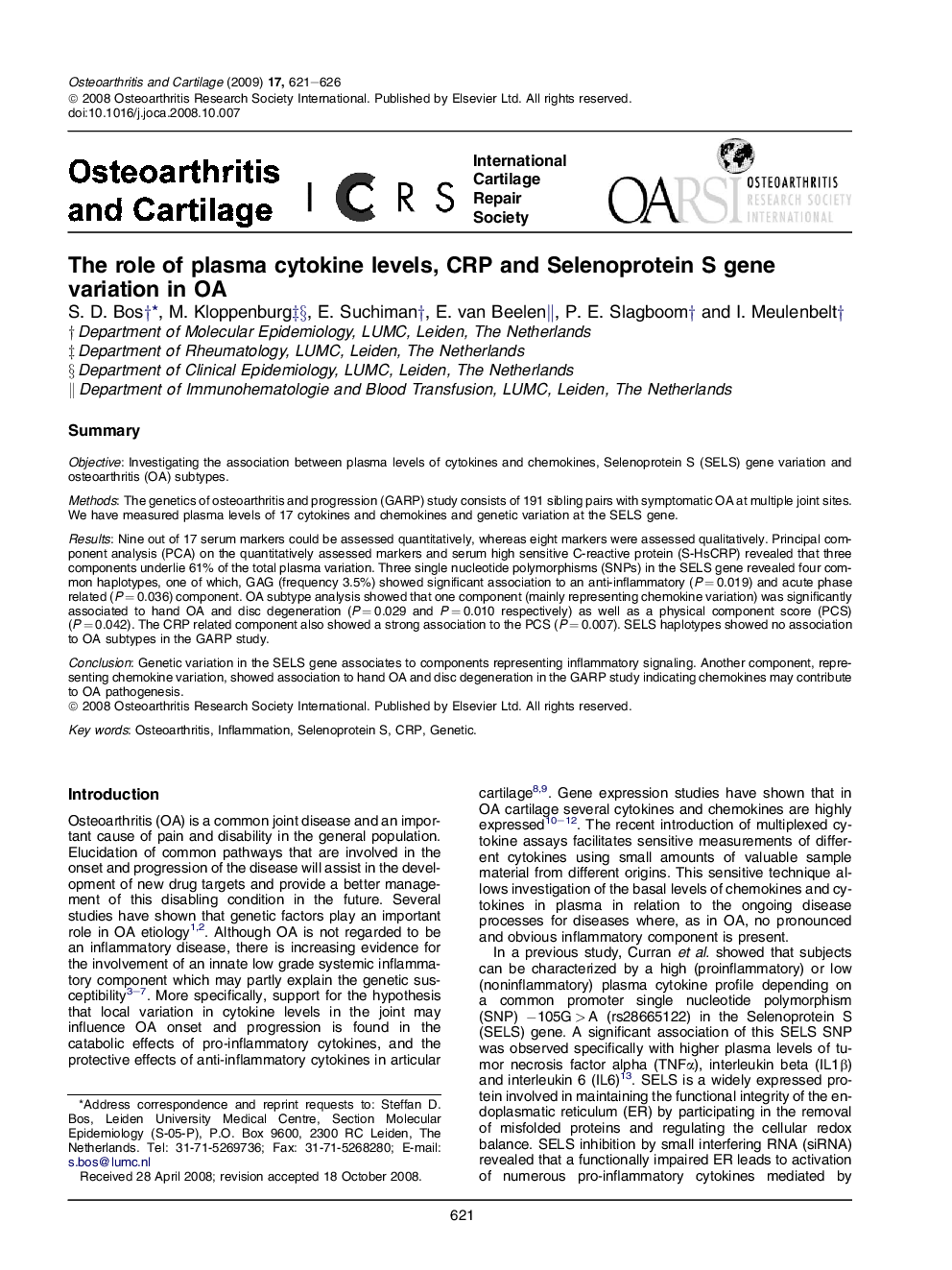| Article ID | Journal | Published Year | Pages | File Type |
|---|---|---|---|---|
| 3381189 | Osteoarthritis and Cartilage | 2009 | 6 Pages |
SummaryObjectiveInvestigating the association between plasma levels of cytokines and chemokines, Selenoprotein S (SELS) gene variation and osteoarthritis (OA) subtypes.MethodsThe genetics of osteoarthritis and progression (GARP) study consists of 191 sibling pairs with symptomatic OA at multiple joint sites. We have measured plasma levels of 17 cytokines and chemokines and genetic variation at the SELS gene.ResultsNine out of 17 serum markers could be assessed quantitatively, whereas eight markers were assessed qualitatively. Principal component analysis (PCA) on the quantitatively assessed markers and serum high sensitive C-reactive protein (S-HsCRP) revealed that three components underlie 61% of the total plasma variation. Three single nucleotide polymorphisms (SNPs) in the SELS gene revealed four common haplotypes, one of which, GAG (frequency 3.5%) showed significant association to an anti-inflammatory (P = 0.019) and acute phase related (P = 0.036) component. OA subtype analysis showed that one component (mainly representing chemokine variation) was significantly associated to hand OA and disc degeneration (P = 0.029 and P = 0.010 respectively) as well as a physical component score (PCS) (P = 0.042). The CRP related component also showed a strong association to the PCS (P = 0.007). SELS haplotypes showed no association to OA subtypes in the GARP study.ConclusionGenetic variation in the SELS gene associates to components representing inflammatory signaling. Another component, representing chemokine variation, showed association to hand OA and disc degeneration in the GARP study indicating chemokines may contribute to OA pathogenesis.
